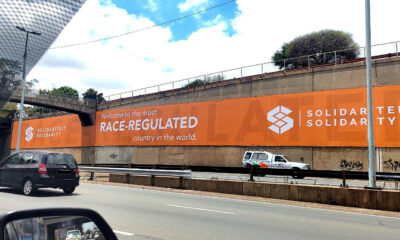Best of Johannesburg
Prepaid Power Panic: The Real Amount of Electricity R200 Buys You in 2025

Why R200 no longer buys what it used to
If you have ever stood staring at your meter after buying R200 of prepaid electricity and wondered why the numbers feel smaller every month, you are not imagining it. Across South Africa, the amount of electricity you receive for the same purchase has become unpredictable. Some Joburg households report getting more than 70 units early in the month, while others see almost nothing if their fixed charge kicks in first.
Prepaid electricity has never been a one-size-fits-all system. By 2025, the gap between what different households receive has widened so much that two neighbours on different tariffs can buy the same R200 on the same day and walk away with completely different results.
This is why the question South Africans ask most often is simple yet frustrating.
How many units should you actually get for R200?
The real 2025 number: a wide range, not a single figure
Across verified municipal and Eskom data, the average range for 2025 looks like this.
For R200, most households receive between 30 and 90 units.
It is a huge range because of five major factors that now shape how prepaid electricity works.
The biggest factor: which block you are in when you buy
South Africa uses an inclining block tariff system. This is the real reason people get wildly different numbers.
The first chunk of electricity you use in a month is priced at a lower rate. Once you cross a threshold, your next units fall into a higher-priced block. The more you use within the same calendar month, the more expensive the price per unit becomes.
This means your R200 at the start of the month is not the same as your R200 at the end.
• Block 1 is the cheapest.
• Block 2 is more expensive.
• Block 3 is the most expensive.
Most municipalities use 350 kWh as the first block limit, followed by a middle block that usually ends at around 500 kWh. Anything above that falls into the highest-priced tier.
In practical terms, a Joburg household buying early in the month may get about 75 to 80 units for R200. The same household buying later, once they have crossed into Block 3, may get just over 50 units.
Joburg’s reality: the fixed charge that hits first
City Power prepaid customers on the Residential Prepaid High tariff have extra complexity. In 2025, this category carries a fixed monthly charge of R200, split between a service and a capacity fee. This fee is deducted from your first purchase of the month.
That means the first R200 purchase often disappears into the fixed charge. You may receive close to zero units, because your top-up is only covering the monthly surcharge.
Only once that fee is cleared does your R200 actually buy electricity. After that point, the amount you receive follows the block tariff structure.
Eskom’s direct customers see different numbers
Households supplied directly by Eskom often pay lower rates for the first block. Eskom’s first block rate for Homelight customers remains one of the more affordable residential tariffs in the country. As a result, the same R200 can sometimes stretch further at the start of the month than it might through a municipality.
Third-party platforms and complex living arrangements
In flats, complexes, or situations where power is resold through intermediaries, an administration fee or markup may apply. Even if the fee is a few rand, it changes how many units you end up with. This is why two people with the same meter type may still get different totals.
A more realistic 2025 breakdown
Using approved 2025 tariff schedules across major municipalities and Eskom, here is what most households can expect in practical terms.
If you buy early in the month
• You are still likely in Block 1.
• Expect about 67 to 90 units, depending on your municipality.
If you buy later in the month
• You may be in Block 2 or 3.
• Expect about 40 to 67 units.
• High-usage households in Block 3 may get below 50 units.
If you live in Johannesburg and you are on the Prepaid High tariff
• If it is your first purchase of the month, your R200 covers the fixed charge.
• You receive almost zero units until the charge is fully paid.
• After the charge is covered, you could get 75 to 80 units in Block 1 or around 54 units in Block 3.
If you are registered as indigent
• You fall into a different tariff category.
• Your rates are lower, and you may qualify for Free Basic Electricity, depending on your municipality’s rules.
This can significantly improve the amount of electricity you receive.
Why timing your purchase matters more than ever
South Africans on social media often joke that buying electricity is like buying airtime in the 2000s. Some days your R200 feels strong; other days it barely scratches the surface.
Yet the jokes reflect a real strategy. The best way to stretch your prepaid units is surprisingly simple.
Buy the bulk of your electricity at the start of every calendar month.
This keeps you in the cheaper block for longer. It also avoids the shock of paying a fixed charge for a small purchase, especially for Johannesburg customers.
How to make sure you are getting the right amount
You should always do three things.
-
Check which tariff you are actually on.
Many people assume all prepaid tariffs are the same. They are not. -
Track your monthly usage.
Your meter or online portal will show how much you have used in the current block. -
Read your municipality or Eskom tariff table.
All official 2025 tariffs are publicly available and updated every July.
Once you understand your tariff and your block, your electricity purchases stop feeling random. The numbers start to make sense.
It is not you; it is the system
R200 no longer goes as far as it once did. This is because of rising national tariffs, municipal markups, fixed charges, and the block system that prices electricity differently every time you top up.
The good news is that once you know how the system works, you can plan better, spend smarter, and avoid that sinking feeling when your meter refuses to climb.
Also read: What Happens After a Public Official Dies Under Investigation
Follow Joburg ETC on Facebook, Twitter, TikT
For more News in Johannesburg, visit joburgetc.com
Featured Image: Forbes



























